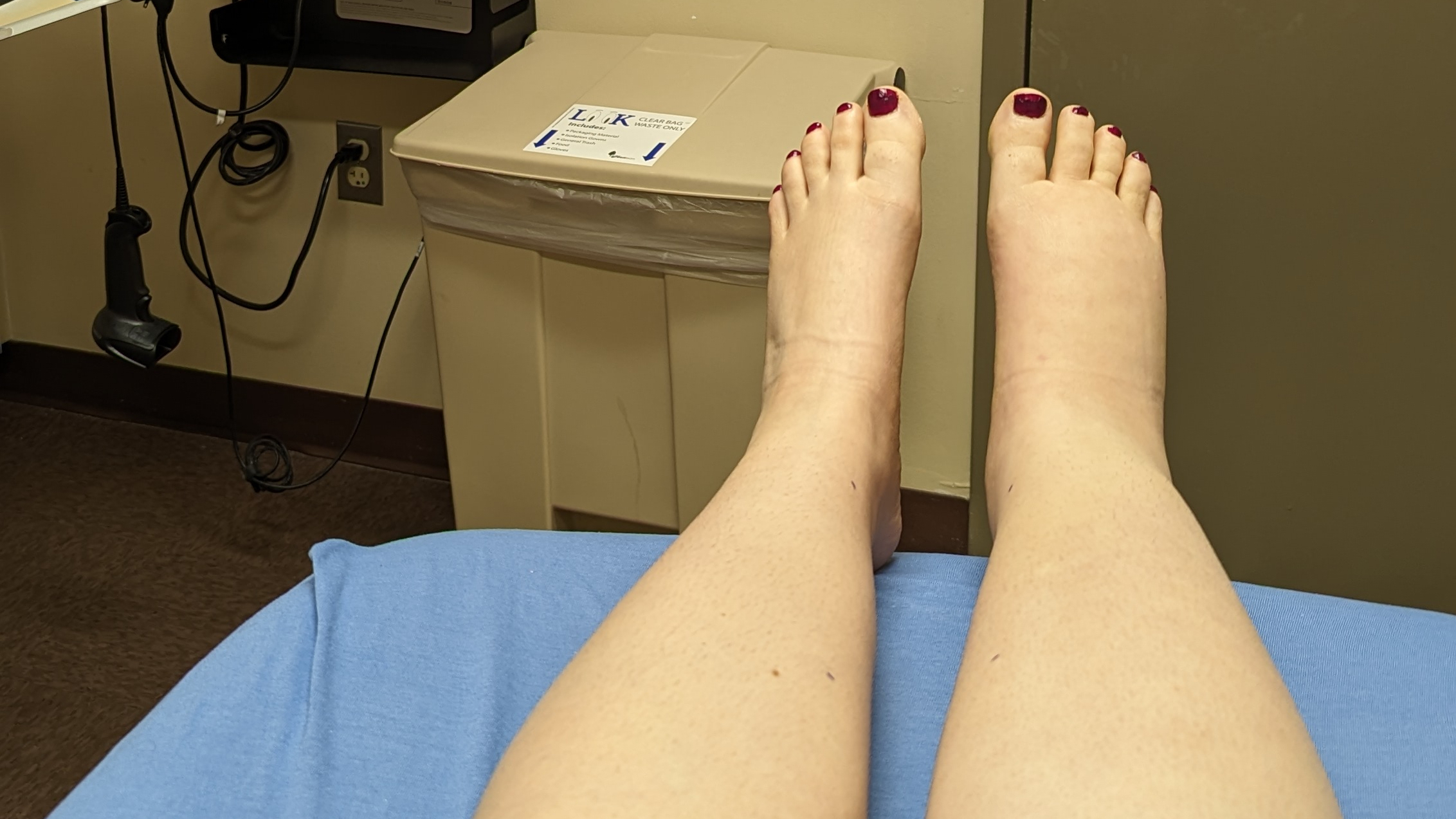As lymphies and lymphedema advocates, we understand the importance of awareness and visibility of rare diseases because we know firsthand the frustrations of misdiagnoses and lack of insurance coverage; we know the painful isolation of feeling as if no one understands you, and the anger at the lack of answers from the mainstream medical community.
Just as well as we know the challenges, though, we also know the power and strength of community and the amazing things that can be accomplished when we come together and advocate for ourselves and our health.
 Today is a day to gather in that solidarity: it’s Rare Disease Day, a worldwide event whose aim is to “raise awareness … about rare diseases and their impact on patients’ lives.”
Today is a day to gather in that solidarity: it’s Rare Disease Day, a worldwide event whose aim is to “raise awareness … about rare diseases and their impact on patients’ lives.”
The theme for 2017 is research and the importance of funding, which is emphasized by their buoying slogan: “With research, possibilities are limitless.”
This day is primarily designed to educate the general public, but it’s also meant to inform the decision-makers, too. All the policy makers, public authorities, industry representatives, researchers, students, clinicians, companies, health professionals, universities, etc. — we’re looking to you!
It can be difficult for people removed from the rare disease community to understand the sense of urgency that permeates a life lived with unknowns, but consider this:
Imagine going to see your doctor only to be told that they don’t know what is happening to your body, that they don’t know what your disease is. Imagine that they can diagnose your disease but tell you that there is no cure or even treatment available. Or that the treatment available is not fully effective but just the best possible option. You don’t know how you or your loved one will manage life from one day to the next, nor how the disease will affect your work or school life.
Imagine what it would be like to live without answers to your most basic questions.
(via RareDiseaseDay.org)
For many rare disease patients, that’s the reality we live in.
I know from my own experience living with a rare disease that it’s directly impacted nearly every facet of my life. Because of the lack of awareness surrounding primary lymphedema, I was misdiagnosed and lived for over fourteen years without proper treatment. And I’m considered one of the lucky ones! All too many patients live decades without the care they need, oftentimes due to a lack of awareness of their disease or issues surrounding accessibility to treatment.
What’s considered a rare disease?
There are a few different criteria used to classify a disease or disorder as rare, and these can differ from country to country. For example, a disease or disorder is defined as rare in the United States when it affects fewer than 200,000 Americans at any given time; in Europe, it’s defined as affecting fewer than 1 in 2,000 Europeans.
Ready for some more numbers? There’s over 6,000 existing rare diseases, 80% of which have genetic origins; the rest are the result of bacterial or viral infections, allergies and environmental causes, or are degenerative and proliferative. 50% of rare diseases affect children.
Any fellow primary lymphies reading? Primary (or hereditary) lymphedema is a rare disease that also encompasses a group of related diseases, including: congenital hereditary lymphedema, hereditary lymphedema type 1, lymphedema-distichiasis, lymphedema praecox, lymphedema tarda, Milroy disease, and Nonne-Milroy disease.
Primary lymphedema is estimated to affect 1 in 6,000 people within the general population, and more often it’s females that are affected than males. It’s possible that there are more of us primary lymphies out there, but misdiagnosis (or no diagnosis) may be keeping countless in the dark and without access to valuable treatment and community.
Common problems…
Receiving a proper diagnosis, having access to quality treatment and care, and shouldering the financial burdens once you finally do receive treatment… those are just a few of the unique problems and challenges faced by rare disease patients. And that’s not even beginning to scratch the surface; there’s also the issues surrounding quality of life, independence and autonomy, and the pyschosocial impacts that inevitably pop up when living with a rare disease.
Remember: there are over 6,000 rare diseases, each of which have their own diverse set of symptoms and related disorders. It’s difficult for each individual rare disease to get the funding it needs for research, and so initial misdiagnosis is incredibly common and patients often end up needlessly suffering without appropriate or effective treatment — or any treatment at all.
Many times these rare diseases are chronic, progressive, degenerative, or life-threatening when left untreated; it goes without saying that research is incredibly, incredibly important in improving the lives of the millions of people living with rare diseases across the world.
…and hope for the future
From advancements in research and the development of new diagnostic and therapeutic procedures, to the adoption of public health policies — progress is happening, and increased awareness is a huge propeller of this momentum.
 The 2017 theme for Rare Disease Day is a testament to this: research is key to empowering patients and giving them the answers — and solutions — they need and deserve.
The 2017 theme for Rare Disease Day is a testament to this: research is key to empowering patients and giving them the answers — and solutions — they need and deserve.
However, the approach to rare disease research needs to be a comprehensive one. According to the Rare Disease Day website, there are various types of research and frameworks that are important to the rare disease community, including:
- Registries and biobanks that serve as databases of patients’ clinical and genetic information as well as catalogues of human biological samples, which researchers use for rare disease research.
- Specific programs dedicated to funding rare disease research for national and transnational projects.
- Fundamental research to identify the cause and mechanisms of rare diseases.
- Translational research to develop therapeutics for patients living with a rare disease.
- Clinical research to test medicinal products on humans through clinical trials.
- Projects that support research into quality of life, working conditions, social needs, integration at school, and multidisciplinary education of social service providers.
Because rare diseases are so diverse and… well, rare (for lack of a better word), it’s really important that there’s international cooperation in sharing knowledge so that research can benefit from the resources and expertise across the world. It’s kind of like a global huddling-up, with all the researchers putting their heads together to figure out the best ways to address and treat these diseases on local, national, and international levels — and to better help us patients, too.
Patients themselves have become valued partners in nearly every aspect of the research process, from advocating and raising funds to partnering in projects and participating in clinical trials. This is especially cool and inspiring, and it’s more proof that we as patients are seriously our own best advocates!
Get involved!
Rare Disease Day takes place on the last day of February (the rarest day!), and there are a ton of events happening worldwide to honor it. If you can’t make it to an event, there are a number of ways to get involved and show solidarity outlined on their website.
Sometimes simply sharing your story or having an open conversation about your experiences as a person living with a rare disease can be a powerful act in promoting awareness. People are often more willing to listen and learn than we expect, and who knows — your dialogue may start some sort of ripple effect. That one person will tell another person, who will tell another person, who might catch the ear of one of those decision-makers mentioned at the beginning of this post… you never know!
At the very least, you’ll be educating one more person on the existence and needs of the rare disease community, and that counts. Life with a rare disease is one often fraught with a lack of answers — but it’s also one of immense hope.
About Rare Disease Day
First launched in Europe by EURORDIS and its Council of National Alliances in 2008, Rare Disease Day was created with the objective to build an international awareness campaign for rare diseases and disorders.
That first year, 18 countries participated in events to raise awareness of rare diseases and advocate for patients; today, hundreds of patient organizations from over 80 countries throughout the world are working on local and national levels to bring awareness to the rare disease community.






Leave a Reply